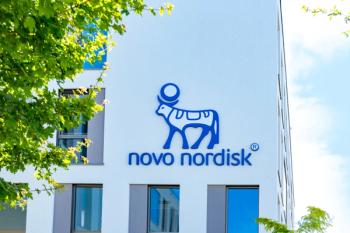
Gene Therapy: The Road to Industrialization
Clive Glover and Mark Szczypka discuss the complexities of scaling up the manufacturing of gene therapies and gene-modified cell therapies to industrial levels.
Gene therapy has become one of the fastest-growing sectors in the life sciences, and there are countless reasons to be enthusiastic about the future of this sector. The fact that we can use specific gene-modifying technology to amend genetic disorders is amazing. While these therapies have the ability to treat disease in a more impactful way than "traditional" drugs ever could, this inevitably means that the cost and complexity of manufacturing such therapies are also significantly greater.
Scott Gottlieb, former Commissioner of the US Food and Drug Administration (FDA) stated at last year’s BIO International Convention that the FDA expected to approve 40 gene therapies by 2022,[1] for which there are currently over 1,000 clinical trials underway worldwide.[2]Although the majority of these are still in Phase I or Phase II, there are over 90 trials in Phase III. Finding a way to manufacture these treatments at industrial levels is arguably one of, if not the, biggest challenge in modern medicine. Just as important is doing this in a manner that remains productive and cost-effective for the companies manufacturing these treatments.
The scale-up challenge
As cell and gene therapies rapidly advance through clinical trials to commercialization, there is increasing demand for practical manufacturing solutions for viral vectors that can be readily optimized and scaled. This hasn’t been an issue so far, as those therapies approved to date have only required a small amount of vector to treat a patient. The amount of viral vector needed for a CAR Tâcell therapy is only the amount needed for effective ex vivo transduction of the patient's T cells in a cell culture setting[3]. But new therapies will require a significantly larger number of viral vectors for the dosing of individuals.
Additionally, while lower molecular weight biologic drug substances are often produced via fermentation, larger recombinant proteins and monoclonal antibodies (mAbs), which account for the largest fraction of biologics on the market today, are generally manufactured using well-established platform processes in mammalian cells. As a result, production equipment has been designed for mAb manufacturing, and this space is well serviced by equipment suppliers.
Viral vectors, however, are substantially more challenging to manufacture in large quantities than recombinant proteins and mAbs. Very different biology is involved in their production and there is significant additional complexity involved with each individual step. For instance, viruses often kill the cells that are used to produce them, which creates complications when scaling processes. Viruses are also significantly larger than recombinant proteins and mAbs, and highly charged. Production systems depend on fleeting expression of the components required to produce a virus, severely limiting titers. This is a problematic issue in prevalent diseases such as hemophilia or Duchenne muscular dystrophy, where there are many patients appropriate for treatment and the doses required per patient is high, so there is a need for larger viral vector batch sizes. The equipment and reagents used for mAb manufacturing are therefore not ideal for the production of viral vectors.
The road to industrialization
Changing the manufacturing process for viral vectors is just the beginning of the journey towards the industrialization of gene therapy production. We need to commit to finding innovative manufacturing solutions if we’re going to confront the industry’s productivity challenges. One such approach could be continuous bioprocessing, which is already beginning to transform how biopharmaceuticals are manufactured.
Continuous biomanufacturing offers various benefits such as improved process economics, increased process design flexibility, scalability, the ability to integrate in process data monitoring and capture this in real time, as well as cost efficiencies in terms of improved productivity from unit operations. Compared to a batch processing, a continuous approach can also significantly reduce the footprint of a manufacturing suite in a general sense and at the same time offer extra "soft" cost savings through reduced build times for facilities, streamlined maintenance and management processes, and reduced workforce demands. These are the cost savings that will be key to improving speed to market and reducing end-costs for lifesaving treatments in the future.
To expedite the use of continuous bioprocessing, Pall Corporation formed a partnership with the New Jersey Innovation Institute (NJII), a New Jersey Institute of Technology (NJIT) Corporation, earlier this year. This initiative is to support two key centers at NJII that will advance the manufacturing of new cell and gene therapies – the Cell and Gene Therapy Development Center and the Center of Advanced Biologic Manufacturing.
The NJII Cell and Gene Therapy Development Center focuses on addressing manufacturing process technologies and workforce development challenges faced by the industry. It acts as a dedicated platform where industry members can access shared resources including equipment, expertise and project work to find innovative solutions to manufacturing needs for biologic medicines. The NJII Center of Advanced Biologic Manufacturing, meanwhile, addresses challenges of mass production through continuous processing and viral vector manufacturing. It brings together "big pharma," emerging biotechnology companies, technology developers, instrumentation companies and regulatory bodies to pioneer new techniques, and to train those who will take the technology into commercial practice at an industrial scale.
This partnership between Pall and NJII underlines exactly why it is vital that the industry collaborates and works together to find innovative solutions, as only through shared knowledge and expertise will we find a way to navigate challenges in manufacturing.
A promising future
As we move forward into a new era of cell and gene therapies, the industry as a whole, needs to look beyond the status quo and think about the way that we manufacture medicines more holistically. These therapies will transform the healthcare industry, thus we as manufacturers and technology providers need to transform how we approach their production. If we're going to tackle the industry's productivity challenges, we need to think smart and invest in finding innovative manufacturing solutions. Pall's automated, end-to-end integrated solutions platform was built to support manufacturers at all stages of biotherapeutic molecule development to improve biologic production, and ultimately, global health. Strategic partnerships such as those with the NJII aim to overcome manufacturing challenges with efficient, integrated and cost-effective total solutions.
Yet we need to remember that manufacturing and providing these revolutionary new therapies at a price that makes them economically viable is not straightforward. That’s why it is vital that companies understand all production options available to them, to be able to choose the one that best suits their product’s process, scale, and timelines, as well as contemplating whether expertise will come from in-house employees, a supplier partnership, be outsourced, or an amalgamation of these possibilities. Ultimately, our goal as an industry is to guarantee that patients have access to the therapies, and by fully understanding and optimizing manufacturing, we can facilitate this through more efficient and cost-effective production.
Clive Glover is Strategy Director and Mark Szczypka is Technical Director, Cell and Gene therapy, both at Pall Corporation.
[1]Terry, Mark, "Gottlieb at BIO 2018: 40 Gene Therapy Approvals by 2022," BioSpace, June 7, 2018. https://www.biospace.com/article/gottlieb-at-bio-2018-40-genetherapy-
approvals-by-2022/
[2]ARM 2018 State of the Industry: https://alliancerm.org/sites/default/files/ARM_SOTI_2018_FINAL.pdf
[3]Kaemmerer, W.F., "How will the field of gene therapy survive its success?" Bioeng Transl Med. 2018 May; 3(2): 166–177
Newsletter
Lead with insight with the Pharmaceutical Executive newsletter, featuring strategic analysis, leadership trends, and market intelligence for biopharma decision-makers.





